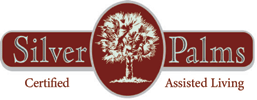To the elderly, defining a home takes on a whole new meaning. Why? The elderly are vulnerable, need assistance, and in some cases require special care. Assisted living is a critical stage in the life of the elderly.
Essentially, what defines a home for the elderly is dependent on the individual’s needs and the availability of a facility that offers desired services.
What does a home mean?
Home means different things to different people. Three factors influence how elderly people view a home. One, the physical features of the facility. Two, the social relationships at the facility. Finally, the characteristics or persona of the individual.
The individual’s psychological factors
For a home to feel homely, the characteristics of the person need factoring in. The person’s physical state of health, mental composure, emotional stability, behavior, and past experiences will affect that person’s view of a home.
The persons running the facility must acknowledge the unique psychological factors of each individual. Extending to the individual the autonomy, independence, and control of self space validates homeliness.
The facility staff must respect likes, dislikes, tastes, and preferences accumulated over time. The facility can allow residents to bring some treasured things like furniture, pieces of art, or paintwork, music, and photos. It creates familiarity, a sense of home, and eases settling.
There should be minimal interference with old habits. For instance, preserve coffee drinking habits. Maintain preferred bed position, choice of colors for bedding and blankets. Perpetuating familiar things appeals directly to the psychology of the person. It stimulates homeliness emotions and increases the feeling of comfort.
A home is a Place for Connecting and socialization.
A home is homely because of the relationship with others. That is the ability to connect and socialize with facility staff, family, friends, and other people in the immediate environment.
The homeliness depends on the nature of the relationship with the staff at the facility. It should be personable, warm, cordial, supportive, and peaceful. The resident should have a feeling of being accepted and a sense of belonging. Ease of visits by family and friends makes a facility homelier. Besides, social activities like trips, competitions, games all promote social interactions improving homeliness. For pet lovers, access to their pets helps maintain past bonds with their pets.
The Built Environment
These are the tangible, physical, visible features of the facility. They include the layout of the facility, the design of the interiors, exteriors, and the aesthetics of the premises. The physical outline of the facility should provide privacy to the individual and their belongings. The overall look, feel, cleanliness, absence of noise, and walkability go a long way in defining the home.
Conclusion
What defines a home is dependent on the physical aspects of the building or facility, the intangibles factors pertinent to the individual, and the social relationships they value. To make a facility homely requires providing desirable physical conditions. However, irrespective of how well the physical features of a facility are, turning it into a home demands matching the facility services to the unique personal and social needs of the resident.

